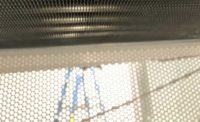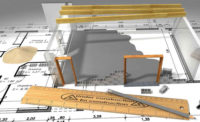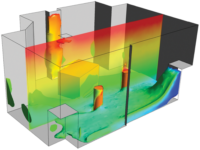Chilled beams offer building owners greater energy efficiency, reduced building first cost, reduced day-two maintenance, and improved indoor air quality. Unlike conventional mixed-air systems that use air as the heat transfer medium for the total load of a conditioned building, “decoupled” chilled water systems split the latent and sensible loads and drive local interior zone sensible loads directly to chilled water supplied through coils mounted in coil casings called chilled beams. Since water is a denser heat transfer medium than air and can hold 600 times more Btu per pound of heat transfer medium, it requires significantly less volume of water than air to maintain space temperature. Energy efficiency is gained by reducing fan horsepower that would otherwise be required to remove sensible heat from a building using an air-side HVAC design. Chilled beam systems are typically coupled with either a dedicated outdoor air system (DOAS), standard chilled water air-handling units, or energy recovery units in order to control latent loads. The chilled beams then address space sensible loads. Consequently, by “decoupling” the sensible and latent load, a building owner can see 20%-40% or more in energy savings when compared to an ASHRAE 90.1-2013 baseline system. There are two types of chilled beam designs:
Debunking Myths of Active Chilled Beams: What You Thought You Knew But Were Wrong, Part 1
How long does it take for condensation to form on an active chilled beam? A group of engineers at SmithGroup used testing and analysis to answer that question and more.






